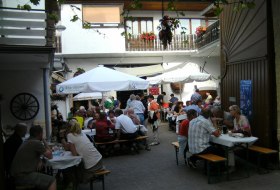Winery Besant
The winemaker Hartmut Besant leads the family vineyard in the Hügelland region of the Rhine.
Try Riesling wine, various Pinot varieties and sparkling wine from our own grapes!


The winemaker Hartmut Besant leads the family vineyard in the Hügelland region of the Rhine.
Try Riesling wine, various Pinot varieties and sparkling wine from our own grapes!

Weingut Besant
Hartmut Besant
Käferstraße 16
55270 Bubenheim

Operating mode: ostrich management
Cuisine: seasonal, regional, vegetarian
In the heart of Rheinhessen, the vineyards of the winery grow in the 5th generation. The varieties Müller-Thurgau, Silvaner and Riesling and various red wines are available for tasting. New to the range, the Besant family offers you Sauvignon Blanc and BERG + Tal, a creation from the Kerner grape. It's always worth a try!
Hot food: see opening times
Main courses: 4,50 - 8,00 Euro
Open Rheinhessen wines: 15
Seats: inside 100 | outside 50
Dates: Wine Weekend 6. - 8. July, Summer Show 13. - 15. July, Hofest 20. - 22. July (each from 17:00 o'clock)
learn more